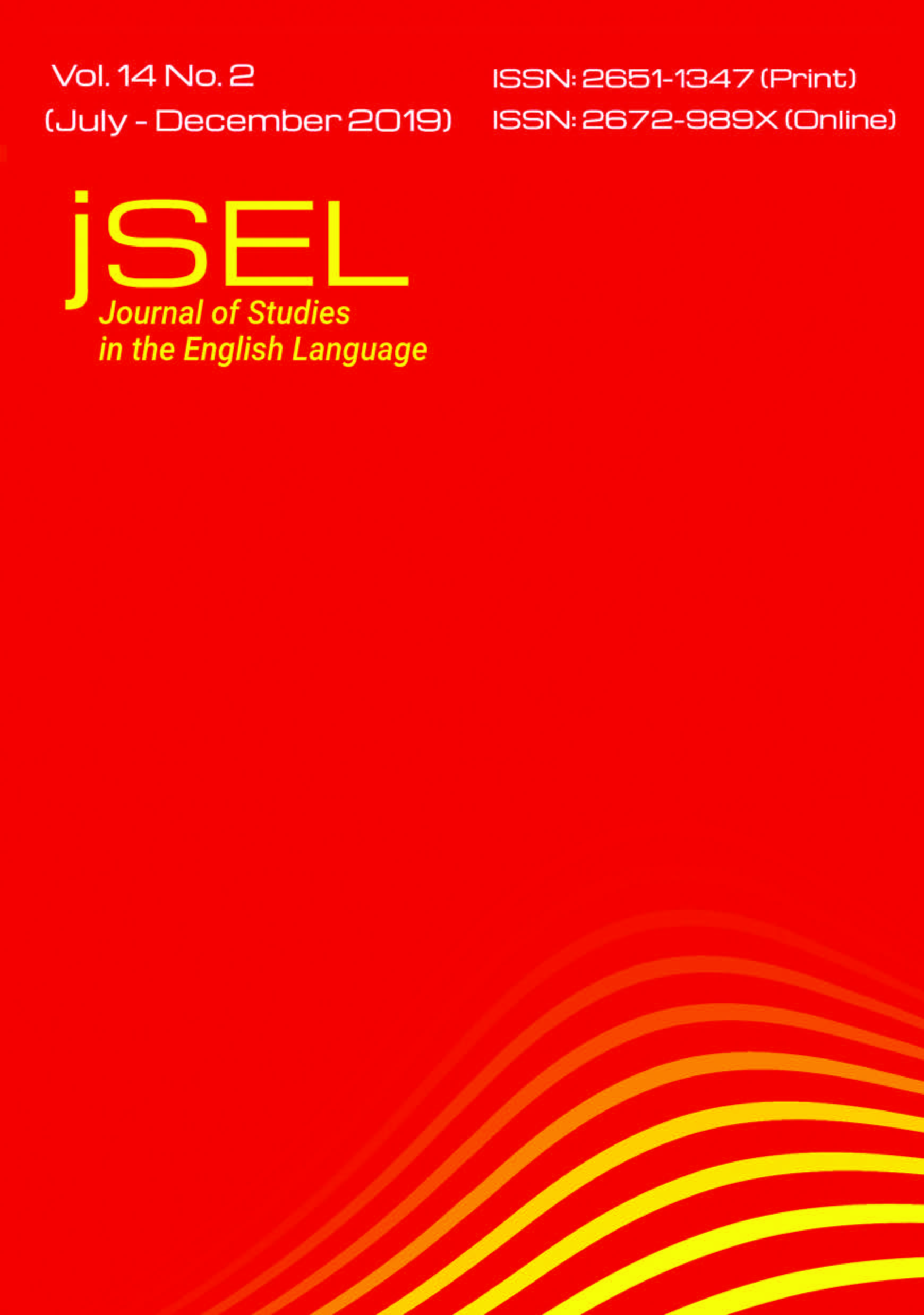Taking Stock in the Use of Dictionaries for Language Learning: Exploiting a Common Resource
Main Article Content
Abstract
For this commentary, I have been tasked with choosing and describing a technological innovation in language learning, selecting several studies that report on using this technology in second or foreign language (L2) classes, and then evaluating how well the activities used by the teachers/researchers exploit the possibilities of the technology. I have chosen to discuss briefly the evolution of dictionaries and their usage for language learning. As a long-term teacher-turned-researcher, I have seen numerous innovations come and go, but dictionaries, albeit often misused, remain a staple in many classrooms. They can be a powerful resource to enhance vocabulary learning and, at least in my opinion, deserve more nuanced attention in published research. As an outsider to this specific field, my critiques are purely observational, representing only a snapshot perspective that is clearly influenced by my own experience working in East and Southeast Asia. Nevertheless, such commentaries can be valuable in bringing to light potential issues from the viewpoint of a research consumer rather than producer in the discipline being discussed. To narrow the scope of this paper, I have focused predominantly on studies in university settings, those of which are the center of discussion having taken place in East Asian contexts.
Article Details
References
Bejoint, H. (1981). The foreign student’s use of monolingual English dictionaries: A study of language needs and reference skills. Applied Linguistics, 2(3), 207-222.
Bruton, A. (2007). Vocabulary learning from dictionary referencing and language feedback in EFL translational writing. Language Teaching Research, 11(4), 413-431.
Chan, A. (2012). The use of a monolingual dictionary for meaning determination by advanced Cantonese ESL learners in Hong Kong. Applied Linguistics, 33(2), 115-140.
Chen, Y. (2010). Dictionary use an EFL learning: A contrastive study of pocket electronic dictionaries and paper dictionaries . International Journal of Lexicography, 23(3), 275-306.
______. (2011). Dictionary use and vocabulary learning in the context of reading. International Journal of Lexicography, 25(2), 216-247.
______. (2016). Dictionary use for collocation production and retention: A call-based study. International Journal of Lexicography, 30(2), 225-251.
Christianson, K. (1997). Dictionary use by EFL writers: What really happens? Journal of Second Language Writing, 6(1), 23-43.
Cumming, G., Cropp, S., & Sussex, R. (1994). On-line lexical resources for language learners: Assessment of some approaches to word definition. System, 22(3), 369-377.
Dubois, J. (1981). Models of the dictionar: Evolution in dictionary design. Applied Linguistics, 2(3), 236-249.
Dziemianko, A. (2012). Why one and two do not make three: Dictionary form revisited. Lexicos, 22, 195-216.
. (2017). Dictionary form in decoding, encoding and retention: Further insights. ReCALL, 29(3), 335-356.
. (2018). The role of online dictionary advertisements in language receoption, production, and retention. ReCALL [Online First], 1-18.
Frankenberg-Garcia, A. (2018). Combining user needs, lexicographic data and digital writing environments. Language Teaching, [Online first], 1-15.
Friedman, G. (2009). Learner-created lexical databses using web-based source material. ELT Journal, 63(2), 126-136.
Hamilton, E. R., Rosenberg, J. M., & Akcaoglu, M. (2016). The substitution augmentation modification redefinition (SAMR) model: A critical review and suggestions for its use. TechTrends, 60(5), 433–441.
Healy, H. (2018). Dictionary use. In T. Liontas, & M. DelliCarpini (Eds.), The TESOL Encyclopedia of English Language Teaching. Hoboken, NJ: Wiley-Blackwell.
Hill, A. (1948). The use of dictionaries in language teaching.
Language Learning, 1(4), 9-13.
Hornby, A. (1947). On the inadequacy of dictionaries: Does drug-store = chemist’s shop? ELT Journal, 1(3), 83.
Horny, A., Gatenby, E., & Wakefield, H. (1942). Idiomatic and syntactic English. Tokyo, Japan: Kaitakusha.
Jain, M. (1981). On meaning in the foreign learner’s dictionary.
Applied Linguistics, 2(3), 274-286.
Laufer, B., & Hadar, L. (1997). Assessing the effectiveness of monolingual, bilingual, and “bilingualised” dictionaries in the comprehension and production of new words. 81(2), 189-196.
Laufer, B., & Levitzky-Aviad, T. (2006). Examining the effectiveness of ‘Bilingual Dictionary Plus’ - a dictionary for production in a foreign language. International Journal of Lexicography, 19(2), 135-155.
Lew, R. (2016). Can a dictionary help you write better? A user study of an active bilingual dictionary for Polish learners of English. International Journal of Lexicography, 29(3), 353- 366.
Lew, R., & Szarowska, A. (2017). Evaluating online bilingual dictionaries: The case of popular free English-Polish dictionaries. ReCALL, 29(2), 138-159.
McAlpine, J., & Myles, J. (2003). Capturing phraseology in an online dictionary for advanced users of English as a second language: A response to user needs. System, 31, 71-84.
Nesi, H. (2014). Dictionary use by English language learners.
Language Teaching, 41(1), 38-55.
Orszagh, L. (1969). Wanted: Better English dictionaries. ELT Journal, 23(3), 216-222.
Puentedura, R. (2013, May 29). SAMR: Moving from enhancement to transformation. Retrieved from https://www.hippasus.com/ rrpweblog/archives/000095.html
Selwyn, N. (2012). Ten suggestions for improving academic research in education and technology. Learning Media and Technology, 37(3), 213-219.
Shien, W., & Freiermuth, M. (2010). Using the DASH method to measure reading comprehension. TESOL Quarterly, 41(1), 110-128.
Taylor, A., & Chan, A. (1994). Pocket eletronic dictionaries and their use. In W. Martin, W. Meijs, M. Moerland, E. Ten Pas,
P. van Sterkenberg, & P. Vossen (Eds.), Proceedings of the 6th Euralex International Congress (pp. 598-605). Amster- dam, Netherlands: Euralox.
Thomas, N., & Rose, H. (2019). Do language learning strategies need to be self-directed? Disentangling strategies from self-regulated learning. TESOL Quarterly [Advanced Access], DOI: https://doi.org/10.1002/tesq.473.
Thompson, G. (1987). Using bilingual dictionaries. ELT journal, 41(1), 282-286.
Trinder, R. (2017). Informal and deliberate learning with new technologies. ELT Journal, 71(4), 401-412.
Welker, H. (2010). Dictionary use: A general survey of empirical studies. Brasilia, Brazil: Author’s Edition.
West, M. (1935). Definition vocabulary. Department of Educational Research Bulletin, No. 4. Toronto, Canada: University of Toronto.
Wingate, U. (2004). Dictionary use - the need to teach strategies.
Languge Learning Journal, 29(1), 5-11.


